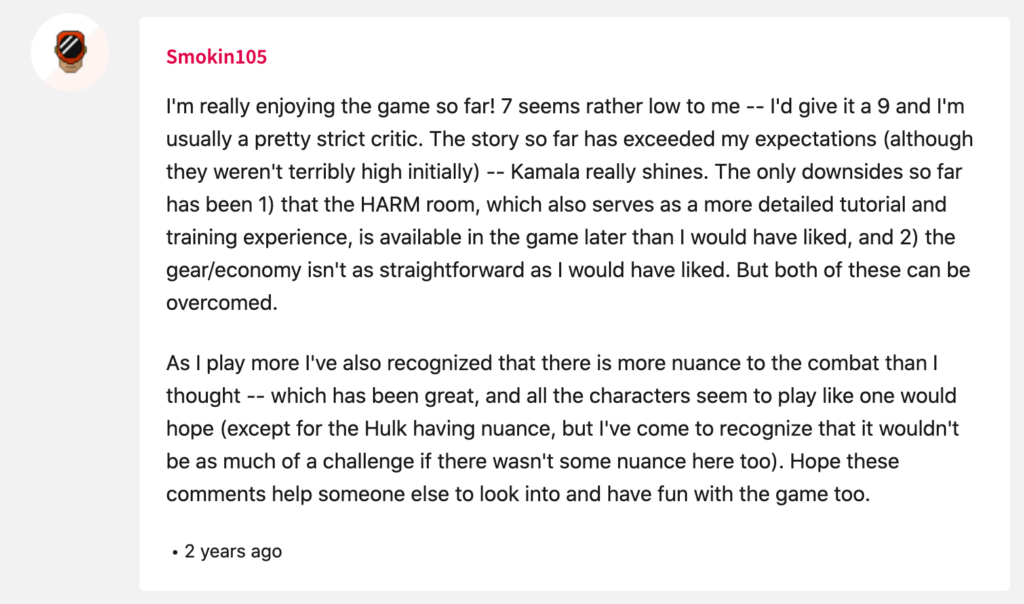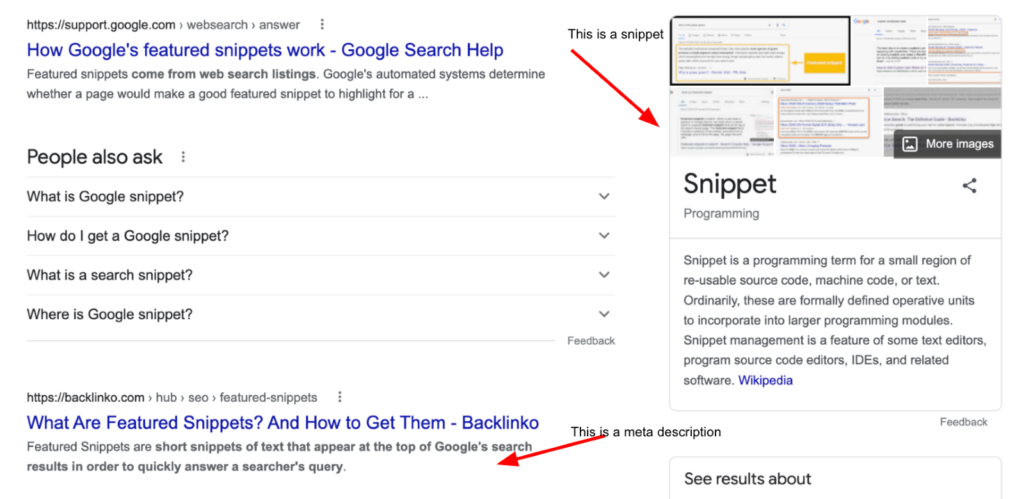Ever pondered how search engines gather details about the web pages they exhibit? It's the magic of meta tags that furnish search engines with necessary insights, imparting hidden nuggets that instruct them on what to crawl.
Effective site optimization is the secret sauce to lure and retain visitors on your webpage. Leveraging meta information can boost traffic and enhance your rapport with search engines, a vital aspect of SEO services. The following meta tags hold paramount significance as you embark on your optimization journey:
- Meta Title
- Meta Description
- Photo Alt-Text
Both the meta title and meta description are the first glimpse that viewers have of the content they could potentially choose to interact with. With an effective meta title, you increase your website’s chances of ranking higher in search results when viewers use certain relevant keywords. Of course, the closer you are to the top of results, the more likely users are to browse your content. The meta description gives users a summary of the content to come, which should be interesting -- but truthful -- enough to draw attention.
While the meta title and the meta description give viewers their first piece of insight, photo alt-text is a little less obvious. This text serves as a short description for images and tells Google and other search engines where to display those images. This tactic also helps develop stronger keyword relevancy.
With the use of the right meta tags, search engines will acknowledge your webpage as trustworthy and useful to viewers. Having different meta tags for each webpage is crucial, yet difficult to do. This task becomes even more tricky when you have two or more products that are very much alike.
What happens when products are almost the same except for one small feature? (For example, a slight difference in length or a different color.) You still need meta information that is unique enough to set them apart. Here’s where to start:
Out the Differences
Even with a similar product name and description, there are still enough factors you can use to make search engines tell your items apart. For example, if there’s a size difference, display the exact numerical figure and label the variations. (Examples: Sizes - Small, Medium, Large / Lengths - Short, Long)
If you’re using the product name for the meta title, you can go even further by shifting the words around in the title and displaying the difference in size or color.
Example:
- SunBright N76 11W Steel Table Lamp
- 12W SunBright N76 Copper Table Lamp
Note how the difference in wattage and color are both used as a part of the title. The slight change in the wording of the titles will tell search engines that the information is unique.
Use Your Personality to Your Advantage
Say you have a webstore that happens to have products that already have pre-written product descriptions. In most cases, the manufacturer will have certain details already included. While this is useful for viewers to know exactly what they’re getting, this could hurt your SEO since the content is displayed in more than one place. If left unchanged, this means every store that has your product will have the exact same description.
So, what’s an easy way to solve this problem, you ask? The answer is simple – by using your personality of course! Leave those generic descriptions behind. As you create your own product descriptions, think about the voice you want your website to use and the image you wish to portray. This way, you won’t have to worry about duplicate content if it’s all original.
Get Users to Add Their Own Personal Touch
Another way to add extra content to your page, or to combat having content that repeats, is to allow your users to be heard as well. Most businesses and webstores are now fond of including authentic user reviews on their pages, especially the positive ones.
Not only do user reviews give Google and other search engines more content to crawl, other users will have a first look at how your product or service can benefit them as well. Also, build up enough stellar reviews and your page can appear in the search engines with an impressive 5-star rating – this means better standings and more visitors!
10 Meta Description Mistakes to Watch Out For
As mentioned before, your meta description is a crucial piece of information. Not only is it one of the first components of your page that users will see, but when written correctly, it’ll also bring you one step closer to enjoying the benefits of good SEO.
So why is good SEO important? Of course, for ranking purposes, but also to establish authority and bring more users to your webpage. You’ll attract users that are interested in your niche, bringing your target audience right to your virtual doorstep. You’ll have the opportunity to inspire them to buy into whatever you’re selling.
The meta description is the perfect place for you to include a call-to-action (CTA). Here, you can encourage users to find out more information. You can even include a phone number if applicable, saving users plenty of time with contact information readily available.
Keep in mind that Google replaces meta descriptions with their own words nearly 70% of the time, especially for mobile content. This is why using the right method to create your description is crucial. Now that you have an idea of what it will take to help improve the ranking of each of your pages, here are 10 mistakes to steer clear of as you write your own meta description:
- Having a Meta Description that’s Too Long
There is limited space for meta descriptions, especially when on display on a mobile device. If on desktop, the description should be no more than 160 characters. If on mobile, there should be no more than 120 characters. You’ll notice that Google’s rewritten descriptions are significantly longer, but you won’t have the same liberty.
Example of a long meta description

- Having a Meta Description that’s Too Short
True enough, you should keep your meta description brief, but not too brief. If your description is too short, search engines will deem it as inadequate in terms of substance and quality. Not only is this bad for ranking, but this warrants for Google to replace your description with one of their own. Be sure to include enough information along with a CTA and you should be fine.
Example of a short meta description

- Having a Meta Description that Doesn’t Match the Webpage
Since the meta description is designed to give a synopsis of the webpage, when the two don’t match, Google and other search engines will certainly do away with an unfitting summary. This mistake can also have a detrimental effect on your standings and how your webpage is indexed.
Using the same screenshot from point 1, here’s an example of an irrelevant description to the title.

- Having Little or No Relevant Keywords
One way to avoid this issue is to treat your meta description like an extension of your meta title. What words would you include if you could have a longer title? By staying on topic and choosing keywords that relate directly to your product, Google, other search engines, and potential buyers will know that the description is directly related to your page content.
Here’s an example of a low keyword optimised meta description.
- Repeating Descriptions
Search engines despise duplicate content, which also holds true for meta descriptions. Every page needs its own unique, intriguing description. If not, your page might get bypassed when search engines crawl it, meaning the content gets bypassed as well.
Here’s an example of repeated descriptions.
- Having Too Many Keywords
Using the same or closely related keywords over and over is horrible for SEO purposes. Instead, include your primary keyword in your meta description once so it works in tandem with your meta title.
Here’s an example of keywords being over-used.
- Having a Meta Description that’s Not Interesting
While your meta description must be accurate, it should be engaging too. If your description is boring, users will bypass it quickly and move on to the next option. Make them want to learn more about your product or service.
Here’s an example of a vague description.
- Having a Meta Description with No Call to Action (CTA)
With an accurate, engaging description of your product or service, the next step is to persuade potential buyers into doing whatever it is you want them to do. With a sense of urgency in place, users are more prone to follow through instead of moving on. (Examples: “Call Today!” or “Click Here for Your Free Consultation.”)
Here’s an example of a description which doesn’t have a call to action.
- Not Knowing the Difference Between “Meta Descriptions” and “Snippets”
Keep in mind that snippets are what Google and other search engines show in the SERPs. (SERP stands for Search Engine Page Results.) Even if Google chooses not to use your meta description, having a well written one could also affect the snippet that’s shown to users.
This is an example of the difference between the two.
- Not Using a Meta Description at All
While this might seem like an obvious mistake, you can easily find websites that don’t use the meta description to their advantage. With some websites, you might notice in the SERPS that there’s a snippet of the home page navigation instead of a description. This is because Google was left to guess what should go there.
Here’s an example of a result that doesn’t use any meta descriptions.

The Bottom Line
Not only does using meta information to your advantage potentially increase your rankings, you will attract more relevant users and be acknowledged as a trustworthy, authoritative source. With a little planning and proper placement, you’ll set yourself that much further from the competition.
